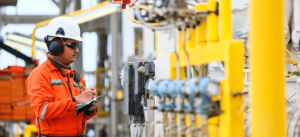
In a company, a hundred things take place at once. And every one of these activities need a safe environment.
Therefore, it’s essential to have someone in the organisation who can identify potential problems, take appropriate action when anything goes wrong, and be able to accept responsibility for the outcome.
This is where a safety officer’s job comes into play.
Who is a safety officer?
An internal employee with the responsibilities of accident prevention, emergency response, and programme effectiveness evaluation is known as the safety officer. A safety officer recognises potential risks, carefully examines them, and takes action to stop them before an accident occurs.
The safety officer answers to the safety manager, who serves as the department’s “head” of safety. The safety officer also examines the effectiveness and efficiency of the safety programme in relation to meeting all OHSMS regulations.
Roles of safety officer in an organisation:
The role of a safety officer might differ from organisation to organisation, but they always have the responsibility of safeguarding everyone’s safety at work. They check to make sure everyone is working safely and according to safe work standards (SSOW/SOP).
Safety officers typically fulfil three primary roles:
Planning
Safety officers must create a safe environment by making sure they have all the necessary equipment for their team. They also have to ensure that they have all the required things for their team.
An example of this would be ensuring they have shoring equipment at hand that they can use to shore up an unstable wall. Making sure that the employees have all the necessary tools to finish their work safely is also a part of the responsibility.
Organizing
Safety officers are also responsible for organizing their workload so that no harm will come to them or anyone else during their work activities. They have to make sure that employees can complete the tasks without causing any damage to the workplace or anyone else.
Supervising
Finally, safety officers are responsible for supervising everyone who works under them to ensure that they are doing their work safely. When supervising, they need to make sure that each person knows their role in the process and where they fit in.
Safety officers handle a broad range of tasks, including various first-aid procedures and safety checks on equipment. They also help set up and operate emergency equipment correctly. In some companies, they may be the only person on-site with first-aid training. In some other companies, they will oversee a group of first-aid trainers or safety managers who do not have their own training as first-aid responders.
Irrespective of their specific role or position in the organization, all safety officers should follow a set of responsibilities
Responsibilities of safety officer in an organisation:
The safety officer is responsible for ensuring the safe and effective operation of any and all areas and facilities in the organization. Here are some of the specific responsibilities that every safety officer has.
- Identify and assess hazards, risks and control measures for a specific operation or process.
- Conduct ongoing review of operations and processes to identify potential hazards, risks and control measures that should be implemented to reduce these risks, including all costs involved in implementing such measures.
- Assess and document hazards, risks and controls in a manner consistent with established procedures and practices.
- Set up and supervising temporary work areas.
- Supervise the safe handling, storage & disposal of hazardous materials.
- Supervise the operation of any potential hazards in the workplace.
- Ensure that all company employees meet all standard OHSMS requirements.
- Provide training if necessary.
- Ensure that health, safety, and environmental policies are followed.
- Investigate workplace accidents and injuries and refer them to the proper authorities.
Ideally, a safety officer will have a degree in a technical field, such as mechanical engineering or structural engineering, and a certification in safety practices.
Final Note
Every organization needs to have a safety officer to look out for its employees and prevent any major safety issues. Safety officers can maintain a safe and healthy work environment and prevent accidents or injuries to employees

The role of personal protective equipment (PPE) in workplace safety.
Personal protective equipment (PPE) is a crucial aspect of workplace safety. It is designed to

Risk Assessment Guide For Dummies
This blog is primarily aimed at organizations, irrespective of industry verticals and sizes, safety executives,

Safety Culture
The Foundations of a Safety Culture Business leaders must routinely promote safety measures and practices if

Roles and Responsibilities of a safety officer
In a company, a hundred things take place at once. And every one of these

